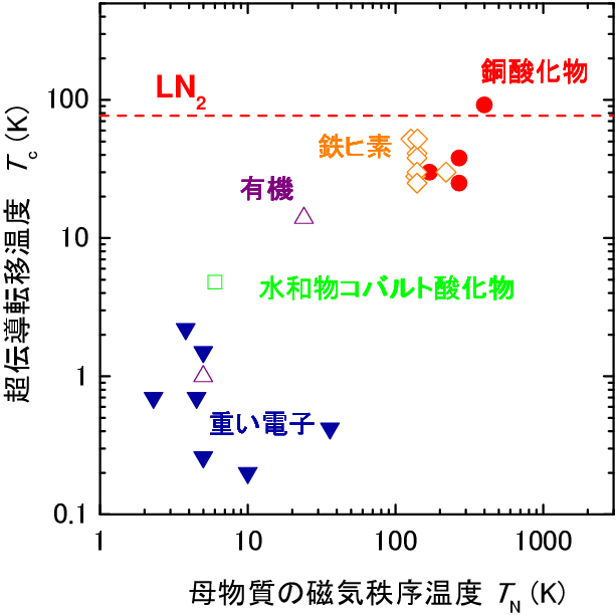We are studying a variety of physical phenomena emerging in a strongly correlated system, where electrons in a solid strongly interact with each other.
At temperatures much lower than room temperature, material properties are dominated by quantum-statistical-mechanics effects, and phenomena far away from common sense, such as superconductivity, occur.
Aiming to discover and understand such novel phenomena, we perform various types of experiments.
Microscopic properties of materials
|
Prof. Ishida and Associate Prof. Kitagawa's group is studying various superconductors and magnetic materials from the microscopic point of view using nuclear magnetic resonance (NMR), nuclear quadrupole resonance (NQR), and muon spin resonance (muSR) techniques.
Recent topics are introduced below.
|
Superconductivity on uranium-based ferromagnets
|
Superconductivity with Meissner effect was thought to be incompatible with ferromagnetism (like magnets).
In recent years, however, U-based materials that are ferromagnetic but show superconductivity have been discovered and are attracting much interest.
In our laboratory, we have studied the ferromagnetic (FM) superconductor UCoGe.
We have showed that UCoGe possesses unique FM fluctuations with strong uniaxial (Ising-type) anisotropy, which are working as a pairing glue for UCoGe.
We also study metamagnetic material UCoAl which can induce strong Ising ferromagnetism by applying a magnetic field, and we are studying magnetic properties of this compound using NMR.
|  |
Iron-based superconductors
|
Recently, iron-based high temperature superconductors which contain iron was discovered by Professor Hosono's group at Tokyo Institute of Technology.
A parent compound of iron-based superconductors are antiferromagnets, but they show superconductivity by substituting elements or applying pressure.
Our laboratory revealed that superconductivity occurs near the magnetic phase in the LaFeAs(O,F) system and that the superconductivity of iron-based superconductor is unconventional superconductivity.
We also report on the relation between antiferromagnetic fluctuations, magnetic order and superconductivity in BaFe_2(As,P)_2 and the FM quantum critical behavior on related compound Ce(Fe,Ru)PO.
By the way, the figure on the right shows the antiferromagnetic ordering temperature of the parent material in various unconventional superconductors and the highest superconducting transition temperature of each system.
Very interestingly, it seems that there is a linear relation between the antiferromagnetism of the parent material and the strength of superconductivity.
We would like to continue to understand the superconducting mechanism from a broad perspective.
|  |
